Though Beijing boasts over forty thousand ancient trees, species like pine, cypress, Sophora japonica, and ginkgo prevail, while flowering trees are relatively rare. Their rarity only adds to their inestimable value. When the weathered branches of these ancient trees, adorned with blossoms and bearing the marks of time, unfold their beauty, it's a sight both breathtaking and majestic, showcasing the remarkable vitality of these ancient giants. Embrace this flower-viewing guide and join us in admiring the splendid blossoms of Beijing's ancient trees!
Ancient Chimonanthus praecox at Wofo Temple
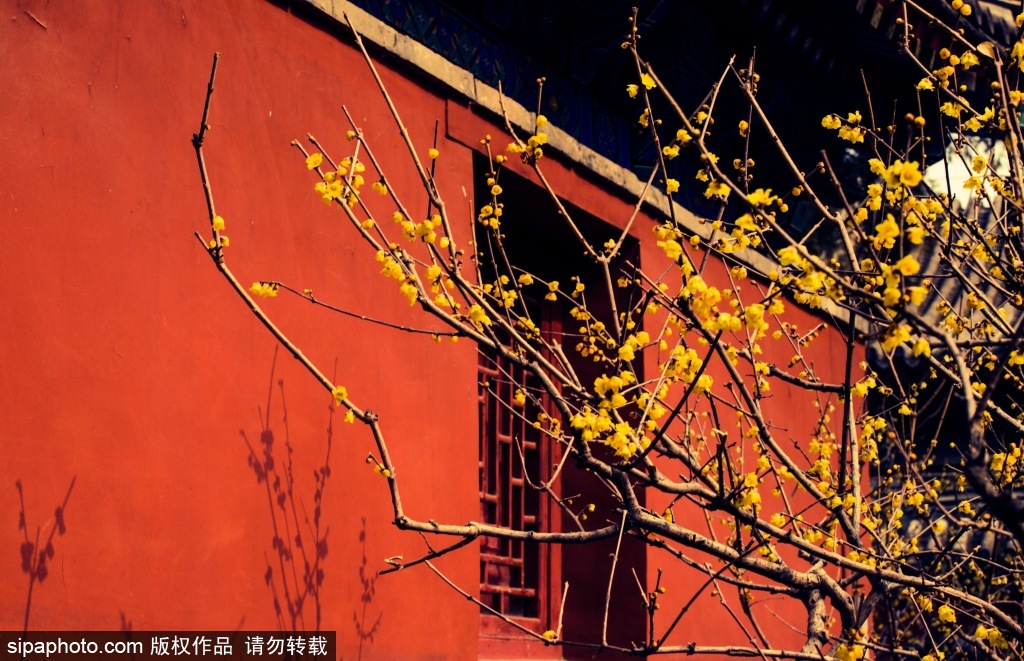

Chimonanthus praecox, often mistakenly referred to as "wax plums," bloom mainly in the twelfth lunar month, leading to the misconception of being "wax plums." Named "yellow plum blossoms" due to their similar fragrance and appearance to plum blossoms, they bloom simultaneously with plum blossoms, resembling honey-colored wax.
Wofo Temple has long been a renowned spot in Beijing for admiring wax plums. The "Second Bloom Wax Plum" in front of the Three Buddhas Hall is hailed as the "finest ancient wax plum" in Beijing. There are two ancient wax plum trees in front of the hall. The planting date of the one on the east side is uncertain, with legends placing it in the Tang Dynasty Zhenyuan period (alternatively, during the Yuan Dynasty or Qing Yongzheng period). It once withered but later sprouted new shoots, thriving once more, earning it the name "Second Bloom Wax Plum."

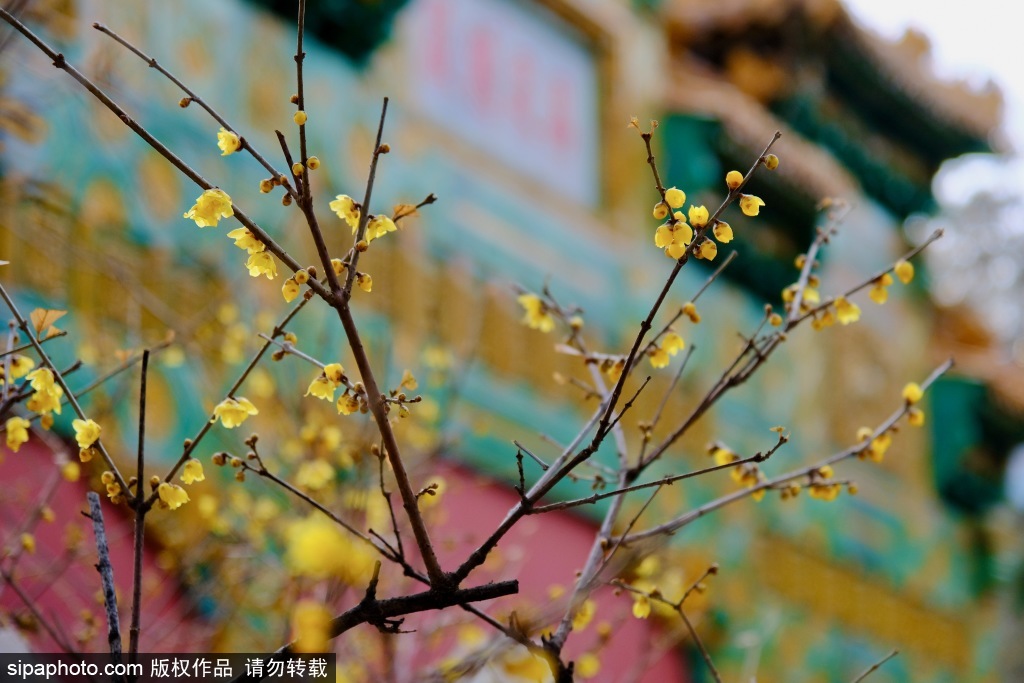
Though not as striking as peach blossoms or peonies, wax plums possess their own unique charm, breaking the monotony of winter and heralding the arrival of spring, adding a touch of elegance to nature. At present, the wax plums at Wofo Temple are in full bloom, with various varieties such as "Suxin," "Qingkou," and "Gouya" competing to display their beauty. Against the backdrop of red walls and black tiles, they exude an air of simple yet profound elegance. This year, the overall flowering period of the wax plums at Wofo Temple is expected to last until mid-March.
Address: Beijing Botanical Garden, Wofosi Lu (Rd), Haidian District, Beijing
Ancient Yulan magnolias at Dajue Temple
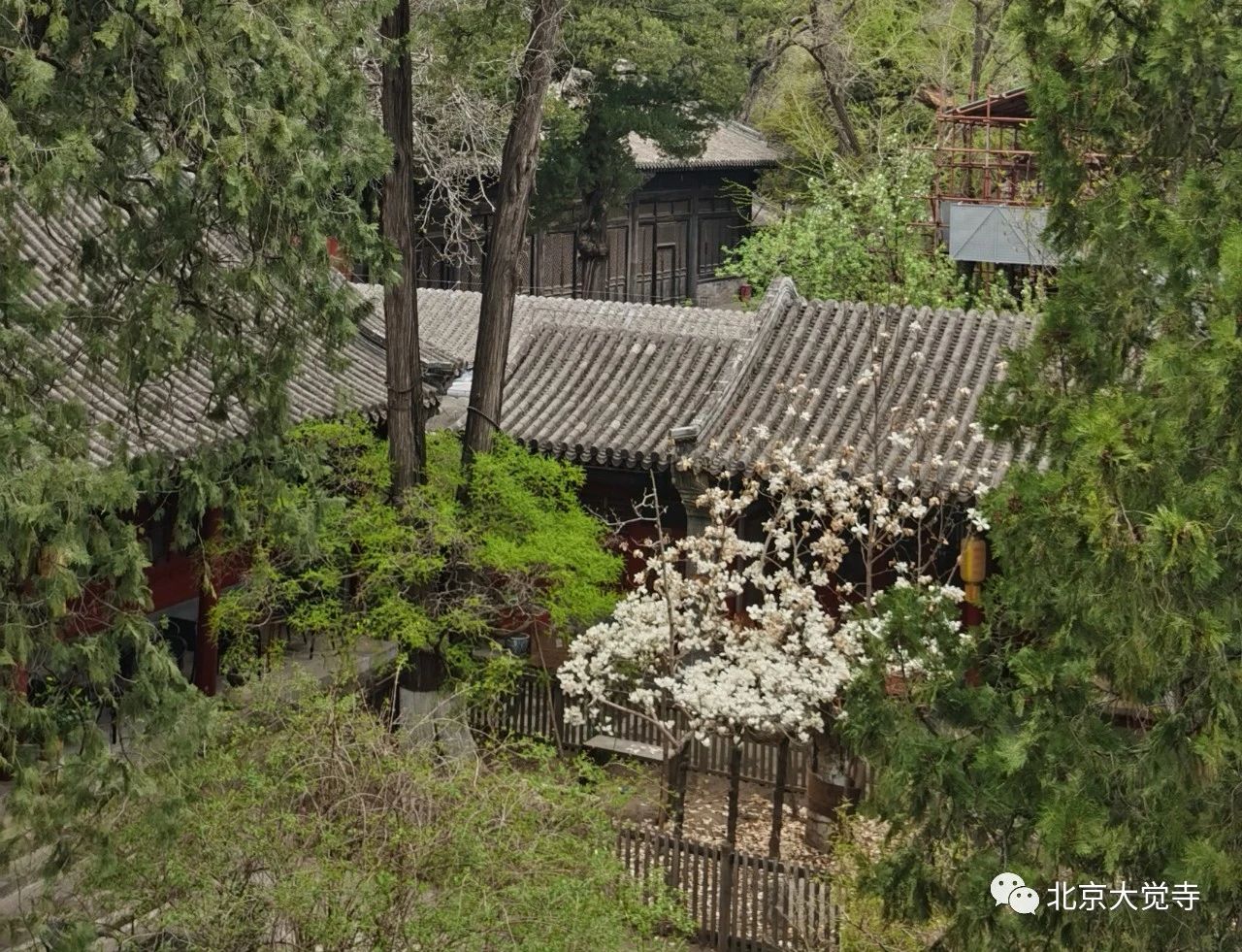
Dajue Temple boasts eight marvels: fragrant orchids in the ancient temple, thousand-year-old ginkgos, old vines entwined with cypresses, mouse plums growing on cypresses, Lingquan spring water, ancient Zen from the Liao Dynasty, pine and cypress embracing the pagoda, and the serene beauty of the emerald pool. Among them, " fragrant orchids ancient temple" stand out. One of the highlights of flower viewing at Dajue Temple is the ancient Yulan magnolia tree, over 300 years old, in front of the Siyi Hall. Legend has it that it was personally transplanted from Sichuan by Chan Master Jialing during the Qing Yongzheng period. The tree stands over ten meters tall, boasts a sprawling canopy, and produces blossoms as large as fists with pure white petals that emit a captivating fragrant.
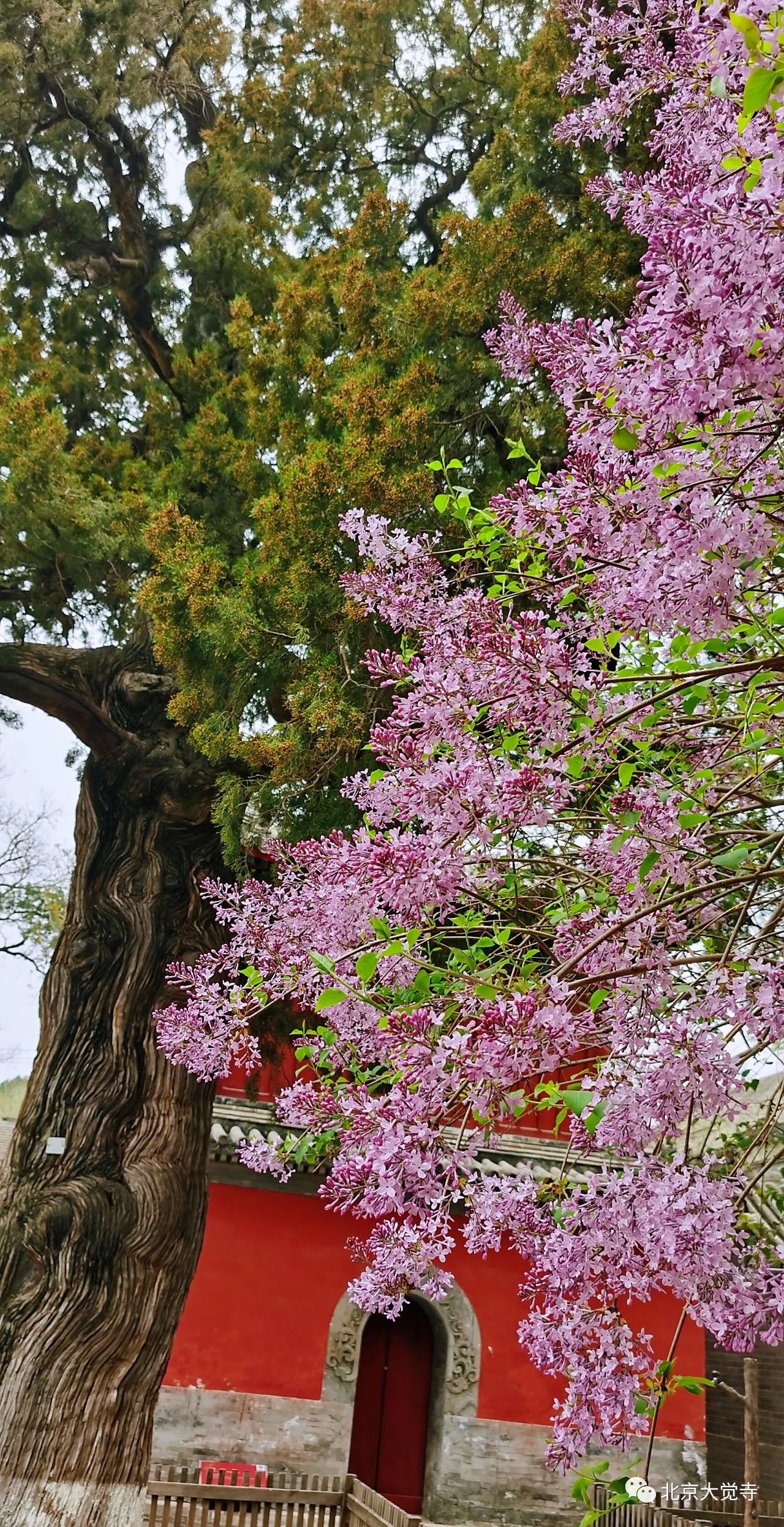
During early to mid-April each year, several magnolia trees in the temple burst into bloom, covering the trees in white, creating a stunning scene that embellishes the ancient temple nestled in the mountains. The blooming white magnolia blossoms, as large as fists, appear like heaps of snowflakes piled up on the branches, yet they do not evoke a sense of coldness; instead, the distant and elegant fragrance earns them the title of "fragrance snow of jade."
In addition to the ancient magnolias in the Siyi Hall, the purple magnolias at Dajue Temple are also in full bloom. Set against the sunlight and the backdrop of the ancient temple buildings, the purple blossoms appear even more vibrant, creating another breathtaking scene during the springtime at Dajue Temple.
Address: No.9 Dajuesi Lu (Rd), Sujiatuo Town, Haidian District, Beijing.
Magnolia × soulangeana in Tanzhe Temple
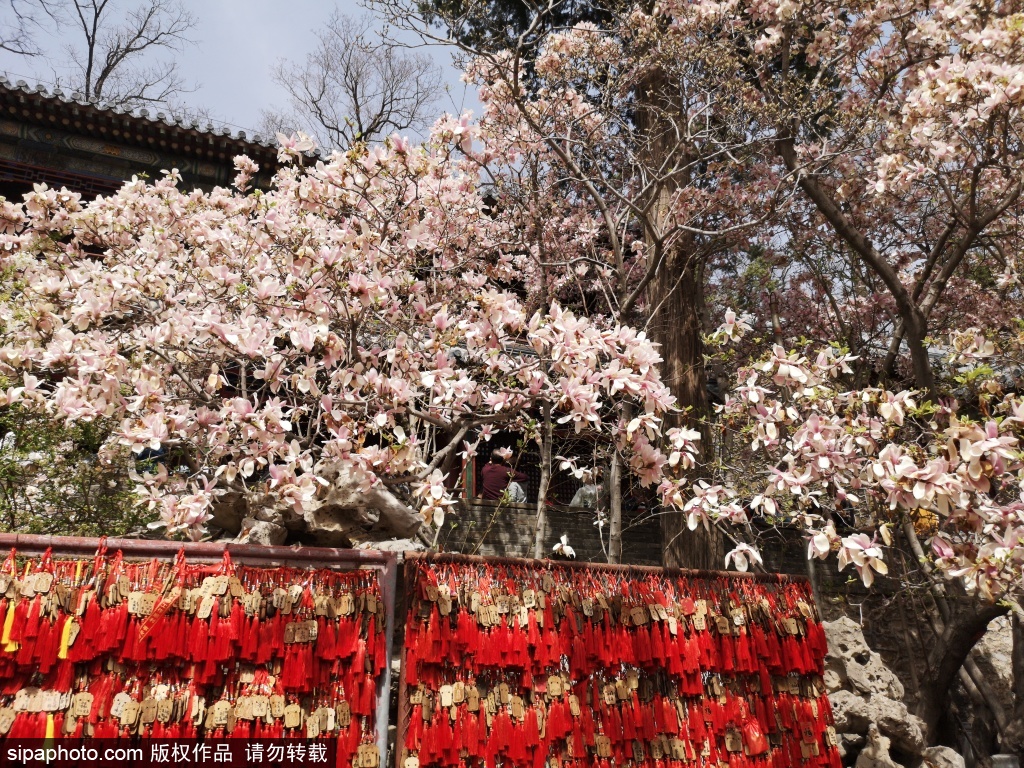
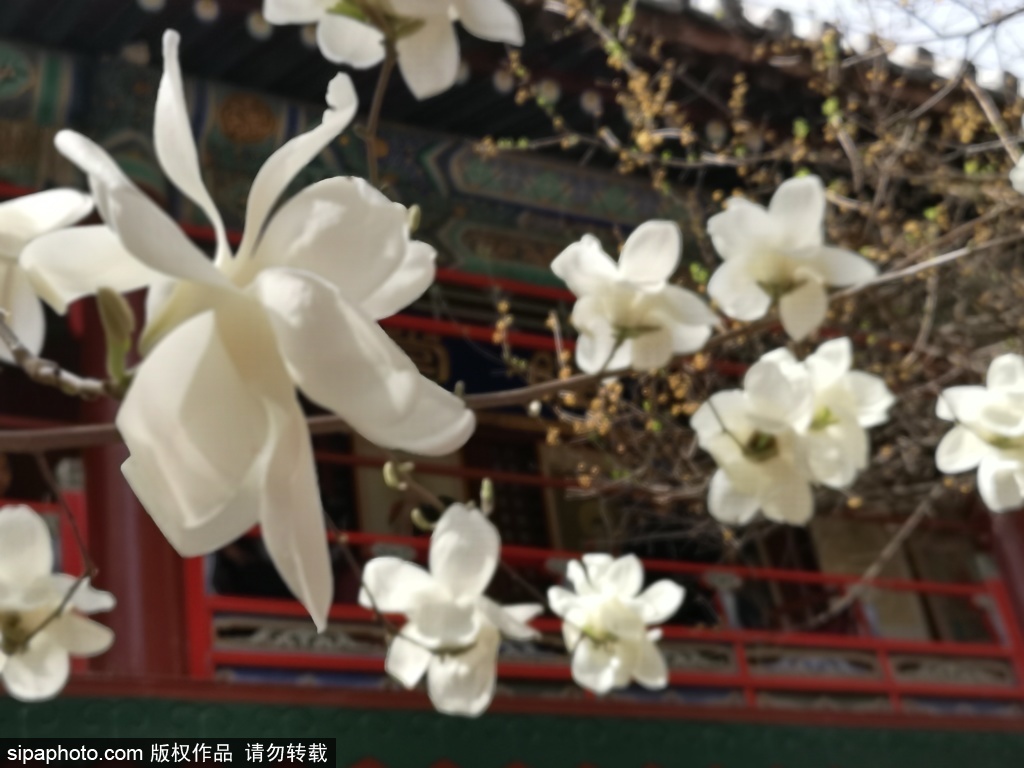
Located to the east of the Pilu Pavilion within Tanzhe Temple are two magnolia trees, known as the "Erqiao magnolia." Each stands over ten meters tall and casts shade over an area of more than twenty square meters. They typically enter their blooming period at the end of March to early April. The name "Erqiao magnolia" was bestowed by locals, as their original name was " saucer magnolia."
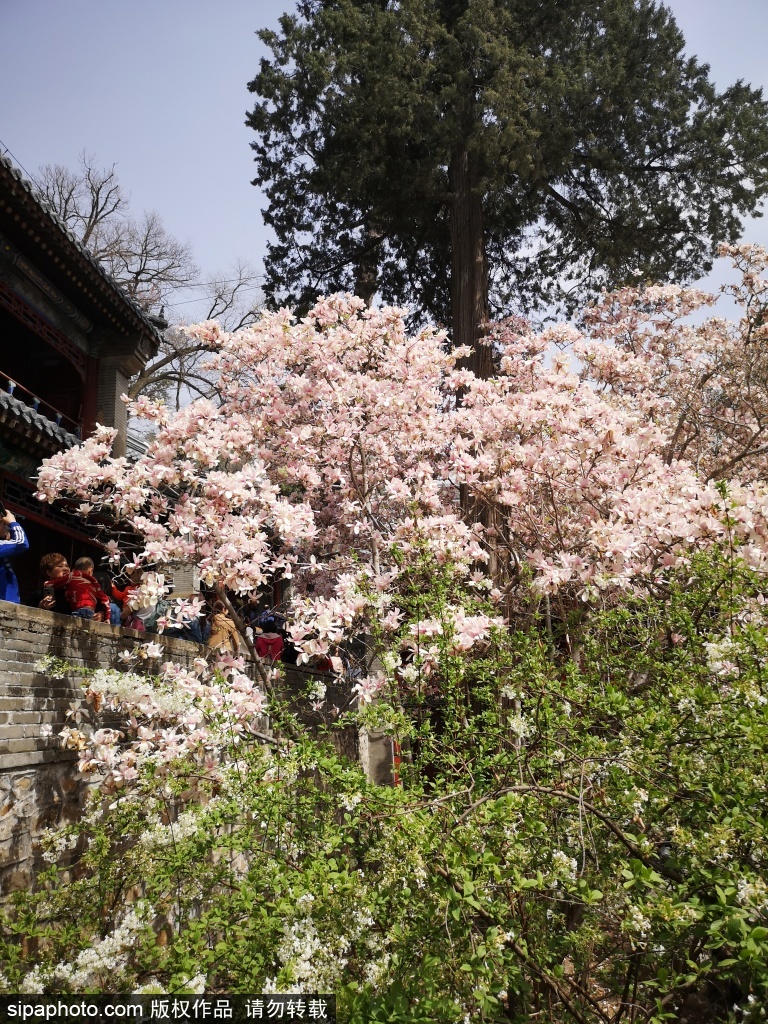
The "Erqiao " refer to the two daughters of Qiao Gong from the Eastern Wu period of the Three Kingdoms, renowned for their beauty. The flowers of the "saucer magnolia" exhibit two colors, purple below and white above, resembling two beauties with different styles, hence the name "Erqiao magnolia."
"The purple magnolias beside the white stone steps are a sight unparalleled in Beijing during the three springs." In the east of Pilu Pavilion at Tanzhe Temple in Beijing, two purple magnolia trees stand. Their trunks are over a foot in diameter, and they reach heights of around twelve to thirteen meters. The peak flowering period is around April 10th each year, when the magnolias bloom luxuriantly like brilliant clouds, truly a magnificent sight. Moreover, these two trees are over 400 years old.
Since 2005, every spring when the Erqiao magnolia blossom, Tanzhe Temple holds a unique "Erqiao magnolia Festival," heralding the peak tourist season. Using the blossoms as a medium, it welcomes visitors from all walks of life who have a special connection to this place. Visitors can appreciate the magnificence of the magnolias and experience the tranquility of Buddhist meditation here.
Address: No. 55, Zone 5, No.288 TanwangLu (Rd), Tanzhesi Town, Mentougou District, Beijing.
Ancient Wisteria at Ji Xiaolan's Former Residence
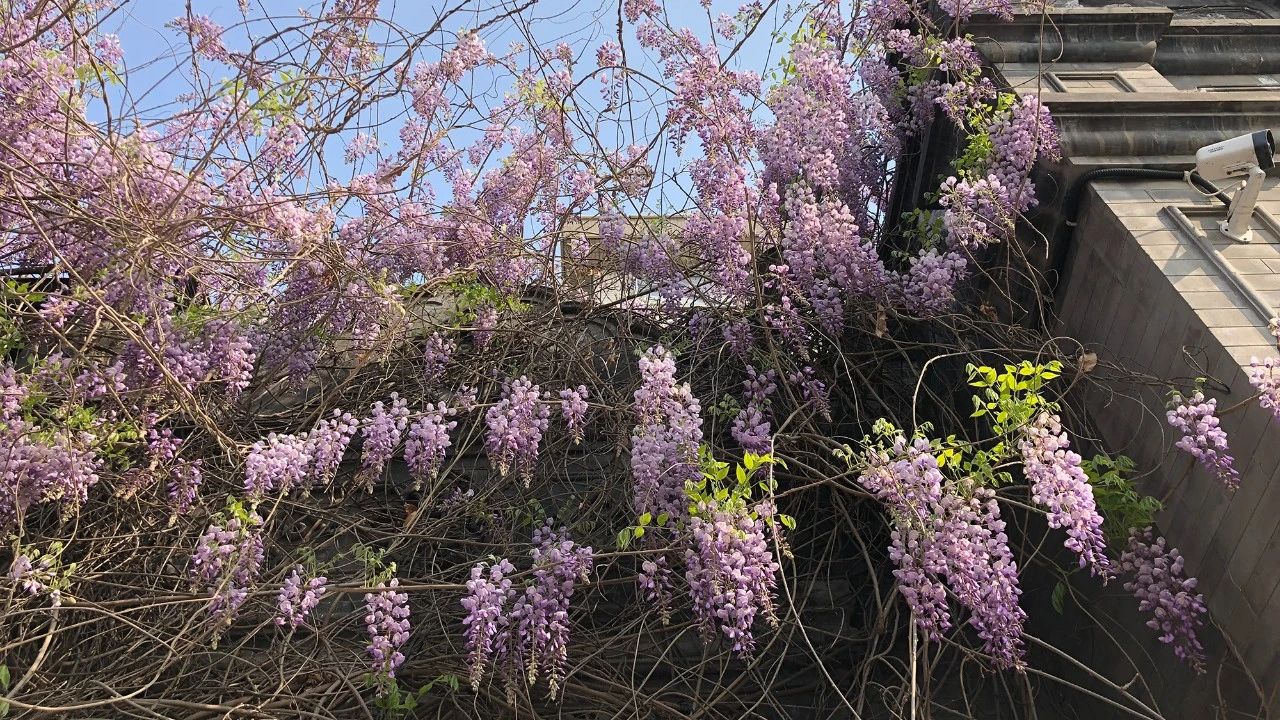
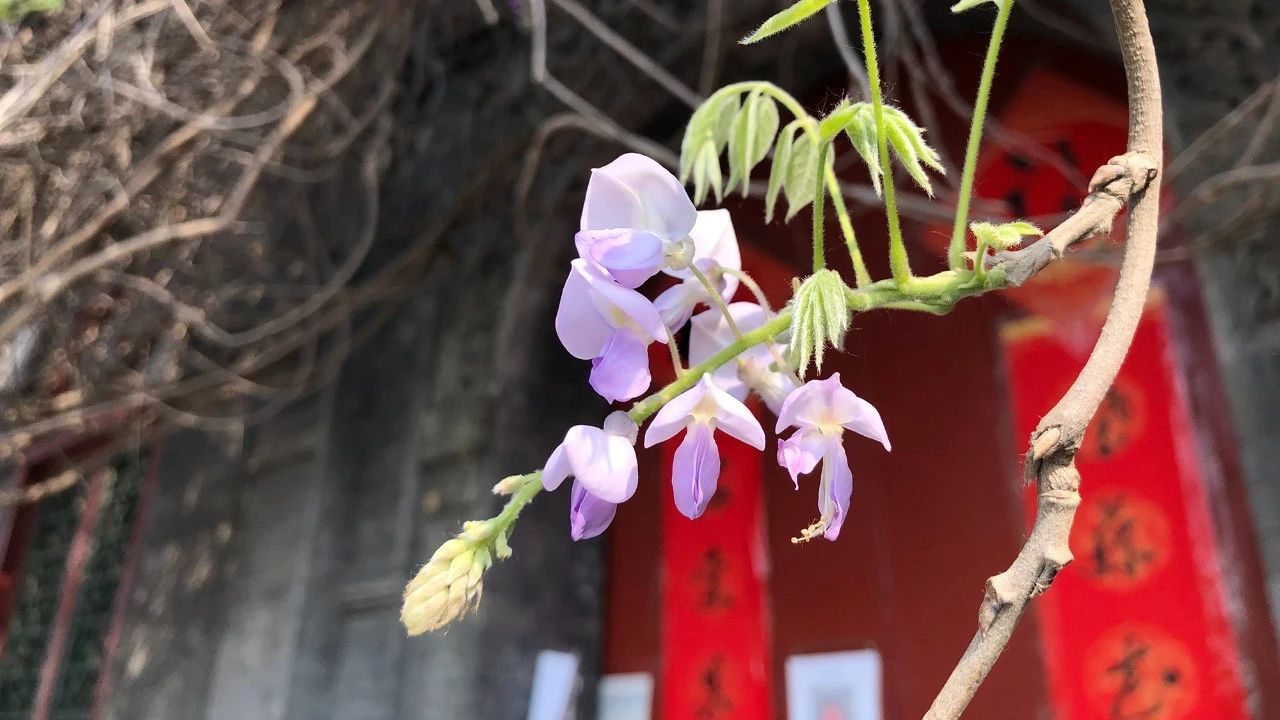
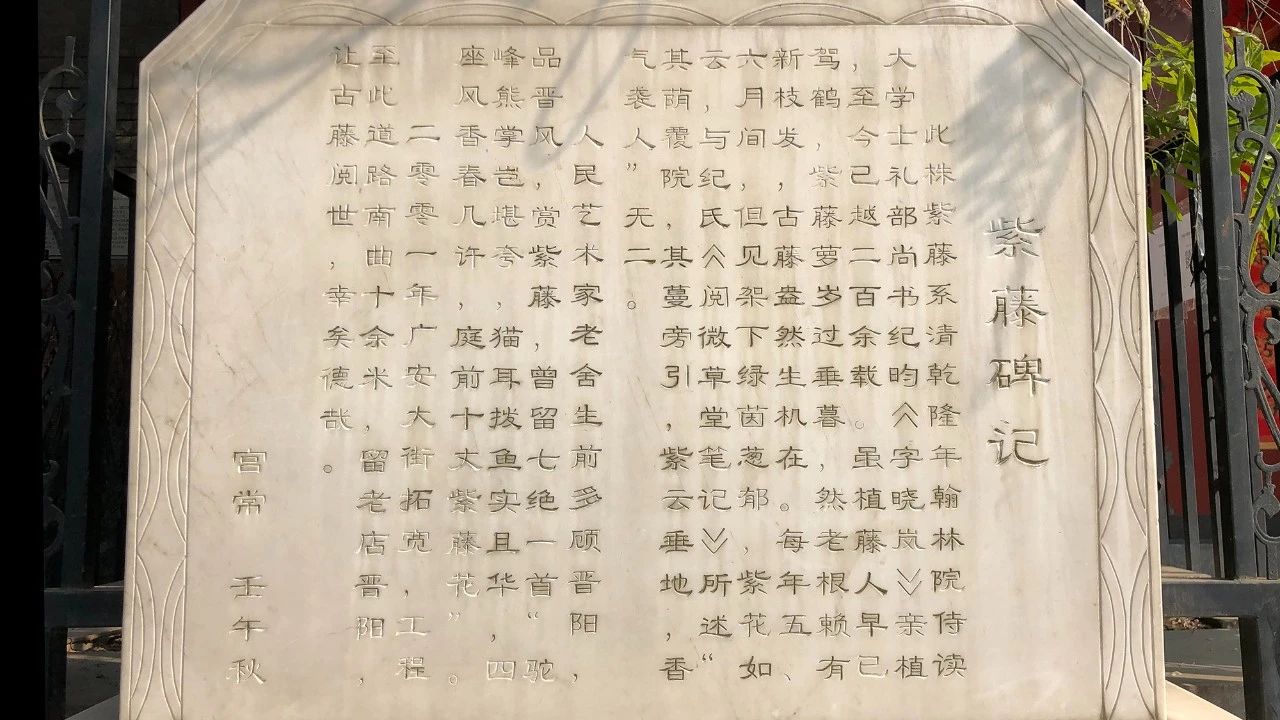
In Beijing, the most famous wisteria is undoubtedly the ancient wisteria with a history of three hundred years growing in front of Ji Xiaolan's former residence. According to research, the ancient wisteria in front of Ji Xiaolan's former residence was personally planted by Ji Xiaolan over two hundred years ago. Ji Xiaolan mentioned this wisteria in his "Notes from the Reading Studio," particularly noting its shade covering the courtyard, its tendrils extending nearby, its purple clouds hanging down, and its fragrance enveloping the surroundings.
Over two hundred years have passed like a fleeting moment, and although the wisteria trellis has aged, it continues to sprout new growth, exuding vitality. From mid-April to May each year, when the wisteria blossoms, it presents an extraordinary spectacle. Under the twisted branches of the wisteria trellis, the greenery is lush; above, the wisteria blooms are like clouds, with countless large flower clusters hanging from the branches like cascading waterfalls. The light purple flowers resemble graceful butterflies, emitting a delightful fragrance and pleasing the eye.
Address: No.241 Zhushikou Xidajie (St), Xicheng District, Beijing
Ancient Catalpa at the Garden of the Forbidden City's Cining Palace
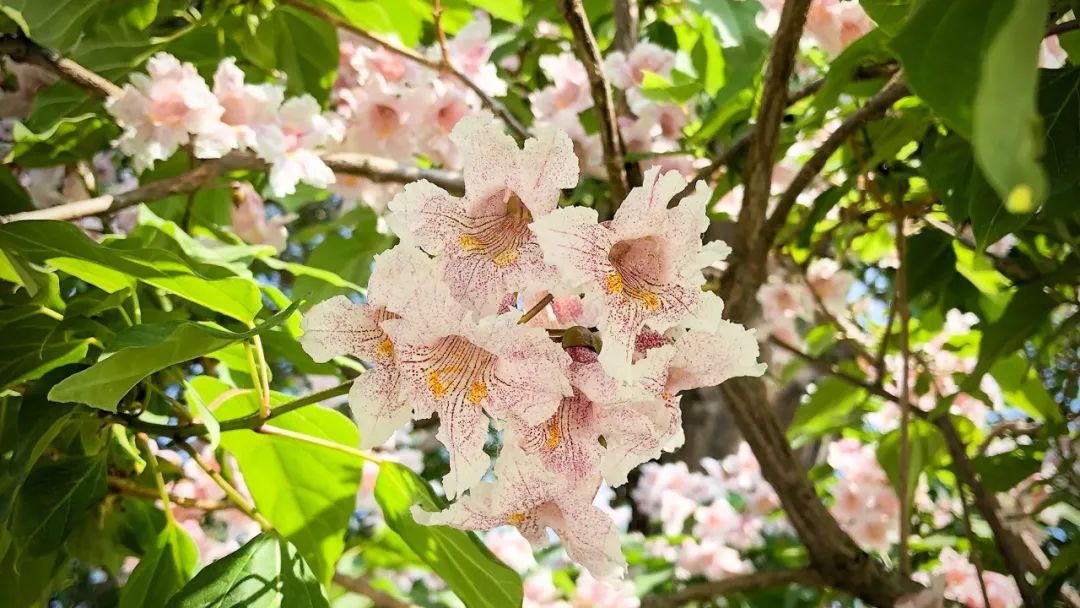
The catalpa tree is native to China and belongs to the deciduous tree genus of the family Bignoniaceae. It has a long history. Research shows that catalpa trees were distributed in various regions, including North China, before the Quaternary glacial period. They are one of the few ancient living fossil tree species preserved through the prehistoric geological and geomorphic changes in China.
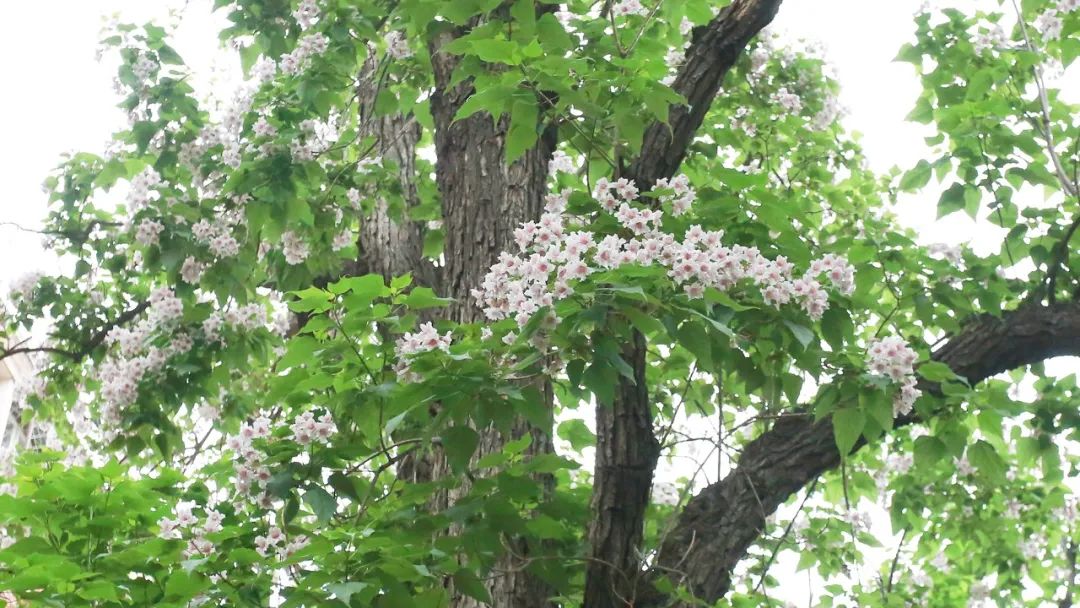
The Garden of the Cining Palace, located southwest of the outer west road of the Forbidden City, was built during the Ming Dynasty and was a place where the empress dowagers, empresses, and imperial concubines of the Ming and Qing Dynasties relaxed and worshiped Buddha. It is quiet, elegant, and solemn. The garden is filled with pine and cypress trees, interspersed with catalpa and pagoda trees. The ancient catalpa in the Garden of the Cining Palace is a first-class ancient tree with a history of 400 years.
The majestic appearance of the tall catalpa tree and the elegant, pale-red catalpa flowers are a feast for the eyes. Every late April, amidst the fallen flowers, only the ancient catalpa blooms, its abundant flowers outshining the snow.
Address: No.4 Jingshan Qianjie (St), Dongcheng District, Beijing
Aesculus chinensis at the Biyun Temple
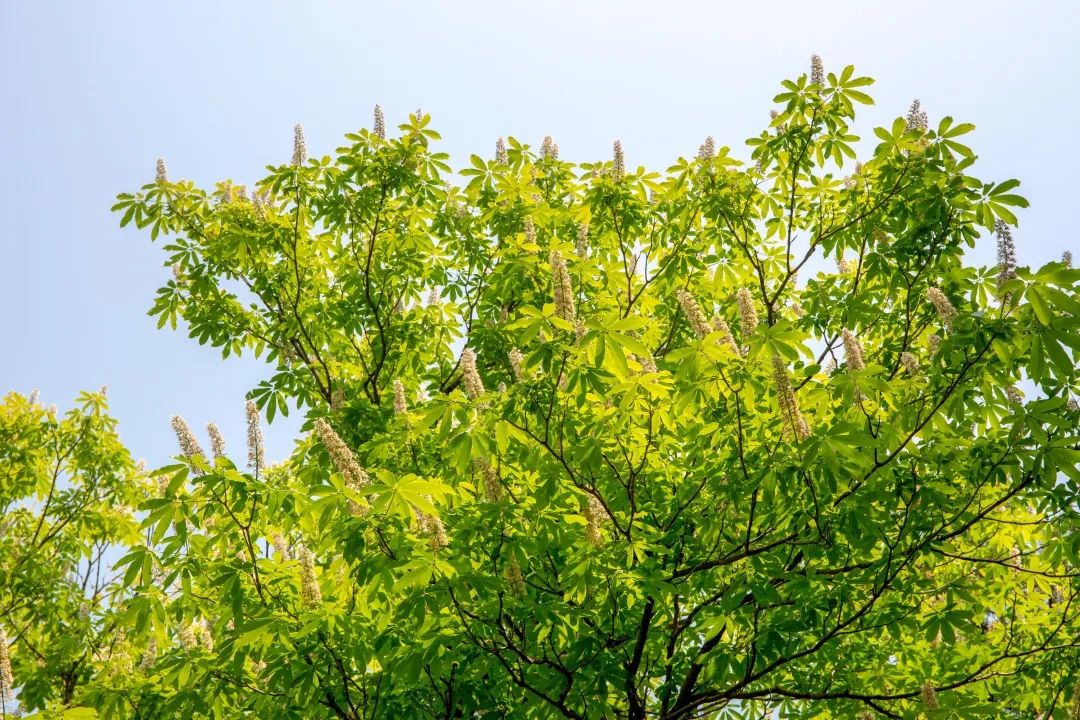
The sixth courtyard of the Biyun Temple houses the Sun Yat-sen Memorial Hall, covering an area of 202.9 square meters. The entire courtyard is adorned with towering white pines, cypresses, and Aesculus chinensis trees, creating a serene and solemn atmosphere. Above the lintel of the gate hangs a plaque inscribed with "Sun Yat-sen Memorial Hall," penned personally by Ms. Soong Ching-ling.
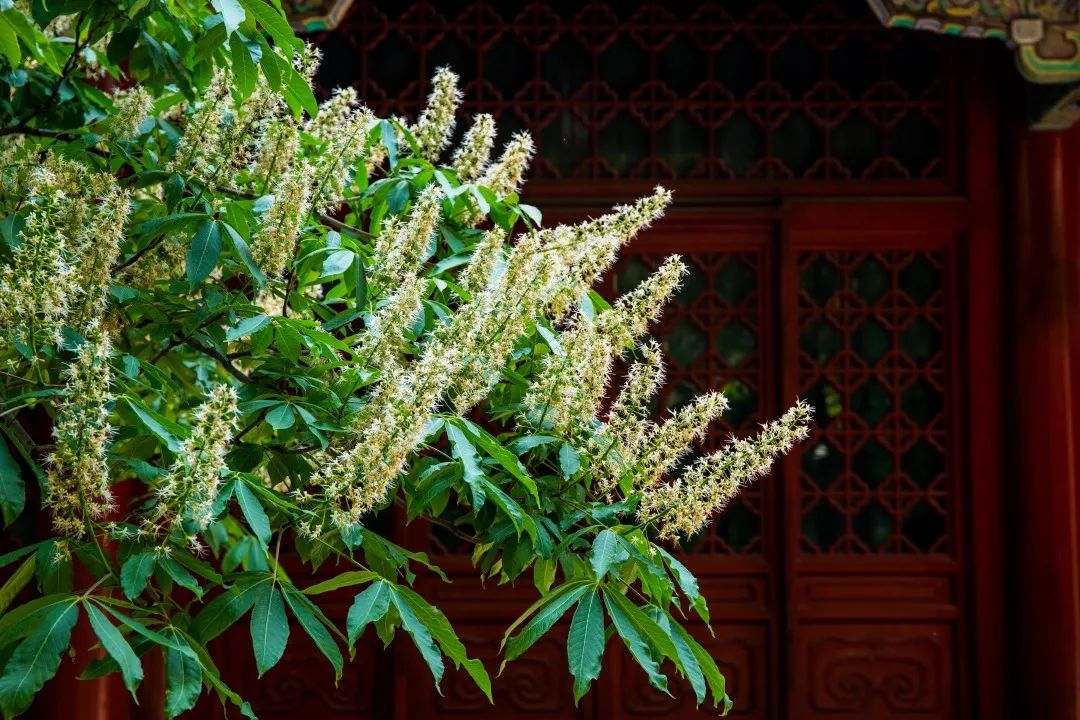
In front of the Sun Yat-sen Memorial Hall at Biyun Temple, several Aesculus chinensis trees stand quietly, their dense crowns adorned with clusters of milky-white, pagoda-shaped flowers, exuding an exceptional beauty.
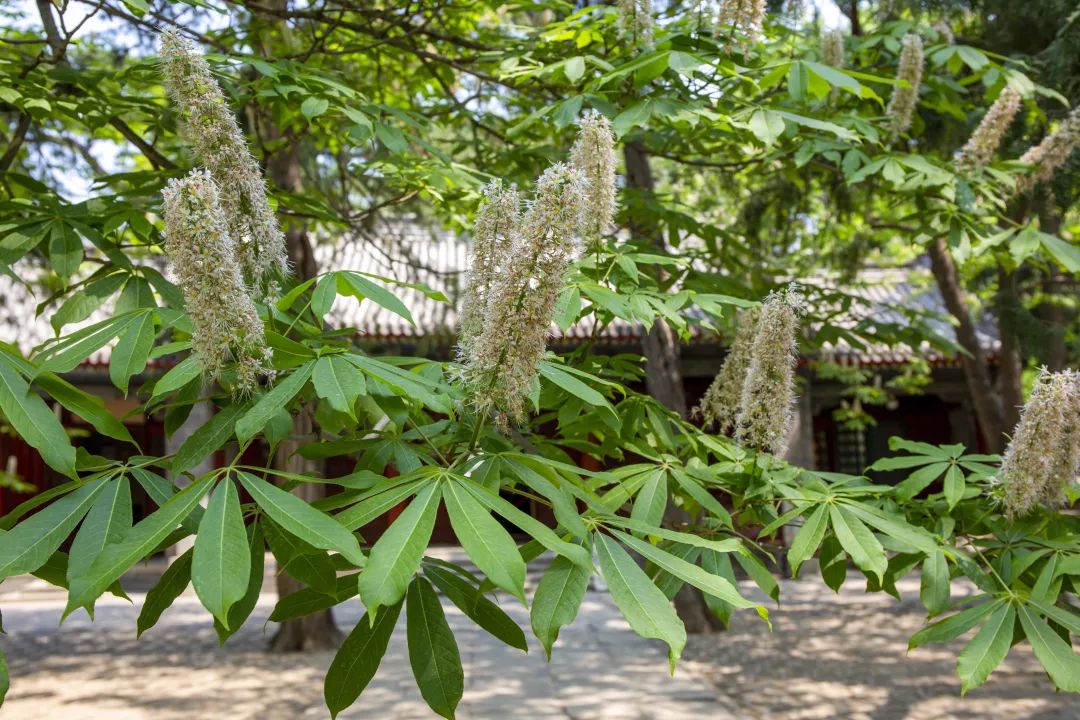
The Aesculus chinensis is named for its leaves, which resemble palms and commonly possess seven leaflets. During the blooming season in May, these palm-like leaves support the pagoda-like flowers, akin to an exquisite candlestick. With its straight trunk, elegant silhouette, magnificent blossoms, and peculiar fruit shape, the Aesculus chinensis boasts high ornamental value.
Address: No.40 Maimai Jie (St), Haidian District, within the Xiangshan Park



